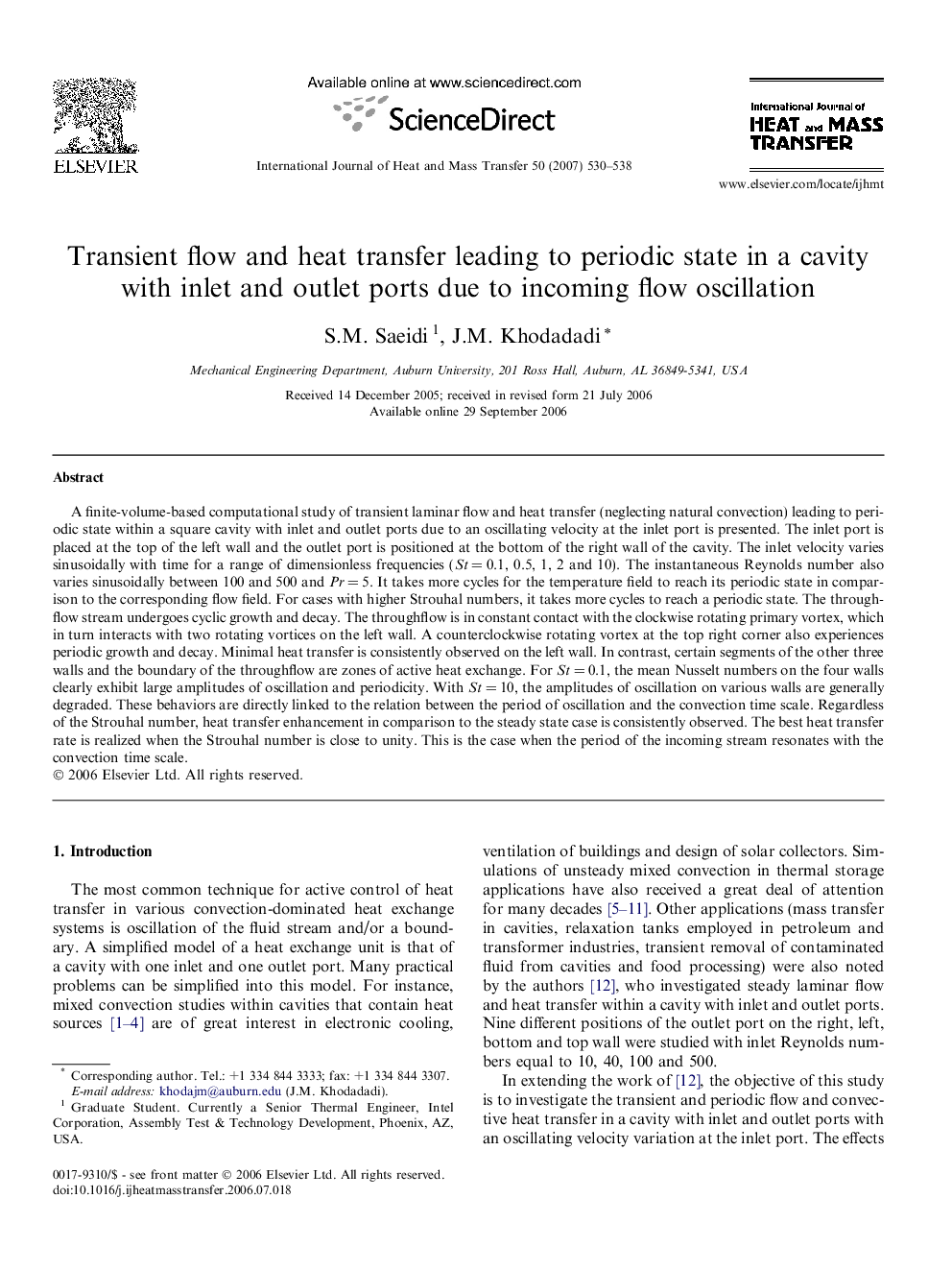| کد مقاله | کد نشریه | سال انتشار | مقاله انگلیسی | نسخه تمام متن |
|---|---|---|---|---|
| 662352 | 1458164 | 2007 | 9 صفحه PDF | دانلود رایگان |
عنوان انگلیسی مقاله ISI
Transient flow and heat transfer leading to periodic state in a cavity with inlet and outlet ports due to incoming flow oscillation
دانلود مقاله + سفارش ترجمه
دانلود مقاله ISI انگلیسی
رایگان برای ایرانیان
موضوعات مرتبط
مهندسی و علوم پایه
مهندسی شیمی
جریان سیال و فرایندهای انتقال
پیش نمایش صفحه اول مقاله

چکیده انگلیسی
A finite-volume-based computational study of transient laminar flow and heat transfer (neglecting natural convection) leading to periodic state within a square cavity with inlet and outlet ports due to an oscillating velocity at the inlet port is presented. The inlet port is placed at the top of the left wall and the outlet port is positioned at the bottom of the right wall of the cavity. The inlet velocity varies sinusoidally with time for a range of dimensionless frequencies (St = 0.1, 0.5, 1, 2 and 10). The instantaneous Reynolds number also varies sinusoidally between 100 and 500 and Pr = 5. It takes more cycles for the temperature field to reach its periodic state in comparison to the corresponding flow field. For cases with higher Strouhal numbers, it takes more cycles to reach a periodic state. The throughflow stream undergoes cyclic growth and decay. The throughflow is in constant contact with the clockwise rotating primary vortex, which in turn interacts with two rotating vortices on the left wall. A counterclockwise rotating vortex at the top right corner also experiences periodic growth and decay. Minimal heat transfer is consistently observed on the left wall. In contrast, certain segments of the other three walls and the boundary of the throughflow are zones of active heat exchange. For St = 0.1, the mean Nusselt numbers on the four walls clearly exhibit large amplitudes of oscillation and periodicity. With St = 10, the amplitudes of oscillation on various walls are generally degraded. These behaviors are directly linked to the relation between the period of oscillation and the convection time scale. Regardless of the Strouhal number, heat transfer enhancement in comparison to the steady state case is consistently observed. The best heat transfer rate is realized when the Strouhal number is close to unity. This is the case when the period of the incoming stream resonates with the convection time scale.
ناشر
Database: Elsevier - ScienceDirect (ساینس دایرکت)
Journal: International Journal of Heat and Mass Transfer - Volume 50, Issues 3â4, February 2007, Pages 530-538
Journal: International Journal of Heat and Mass Transfer - Volume 50, Issues 3â4, February 2007, Pages 530-538
نویسندگان
S.M. Saeidi, J.M. Khodadadi,